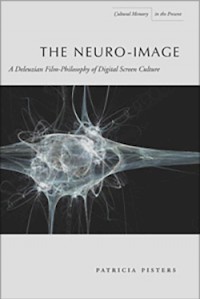
Stanford: Stanford University Press 2012, 370 Seiten. ISBN: 9780804781350
This book approaches 21st-century globalized cinema through the new concept of the “neuro-image.” Pisters begins with the premise that today’s viewers no longer look through a character's eyes; instead, they move through his or her brain or mental landscape. Her book elaborates the threefold nature of the neuro-image by drawing on research from three domains—Deleuzian (schizoanalytic) philosophy, digital networked screen culture, and neuroscientific research—and is accordingly divided into three parts. The first reads the brain as screen, or “neuroscreen,” thereby grounding contemporary cinema in our bodily materiality. It investigates clinical and critical aspects of schizophrenia alongside contemporary films that deal with the same disease, elaborates connections between film theory and cognitive neuroscience, and reflects on the omnipresence of surveillance. Next, the book explores neuro-images from a philosophical point of view, paying less attention to science and more to their ontological, epistemological, and aesthetic dimensions. Individual chapters deal with Bergson, Deleuze and questions of time, Hume’s skeptical epistemology and the increasing blurring of the false and the real, and the affective powers of what has come to be called the neo- or digital baroque. The final section of the book is dedicated to the political and ethical aspects of the neuro-image, including the production of historical memory, the ways in which the neuro-image can impact politics, and the multiplication of screens in the context of war and war films. Pisters leaves us with an understanding of why it is that the neuro-image has emerged in our present moment.